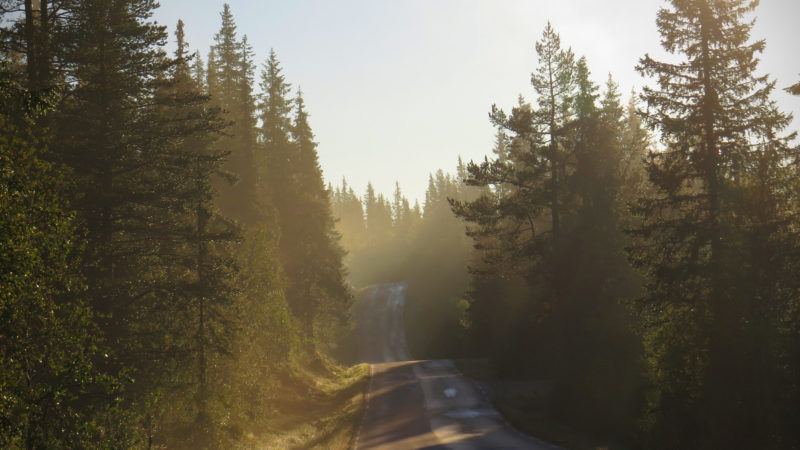The Beatles were the first to bring Norwegian trees to my attention, though the profound cultural insight I was hoping to glean while listening to “Norwegian Wood” on my one-way flight to Oslo was not to be. The title appears in the same sentence within the first and last stanzas — as the cheap yet chic material from which a paramour says her furniture is built — and is acknowledged nowhere else.
Still, the idea of Norway’s trees and forests retained a certain mystery. Now, after several months in the country, I can say that the forests I have seen here depart significantly from the domineering American forests in which I spent many a summer stranding myself at claustrophobic classical music programs for teens — Outward Bounds for brittle violinists. Admittedly it is difficult to forge a positive relationship with the forests in one’s native country when they seem ambivalent about once having given you a debilitating case of Lyme disease. But the trees I have observed thus far in Norway are more imaginative, more bluntly individual, with stark variations in size, shape, and character within a given short distance. The distinctions lighten the landscape, make it easier to parse. In the lake and hiking area of Sognsvann, and on long train rides to the cities of Stavanger and Bergen, I have noted one particular pine that is hysterically thin and tall with short little branches, a petrified cousin of the spasming car wash figures that the nomenclature has graciously dubbed “skydancers.” Then there is a voluminous spruce, called the Norway spruce in fact, that wears its thick leaves like a cloak and huddles in impenetrable cabals along the mountainside when it is not being felled in the name of Christmas. Another sort of irresistible pine that grows in anxious knots as though bracing for bad news.
On a hike or from the train, you can see the trees collect in neat surges along the countryside, like organized screams. Most of these trees seem to have agreed to lose their leaves the usual way, yet others refuse the protocol and astonish by going bald instead. In all this careful idiosyncrasy, the territory seems plastic, almost digital. The trees bear the conspicuous mark of some director, a ringmaster whose crop commands the pines into knots, contorts the birches, makes two spruces smooch.
I had moved to Norway to study music, not to indulge in the postcard landscapes that so tickle most tourists. But the trees and the environment writ large began to endear themselves to me following a performance I attended, shortly after moving, of the composer and clarinetist Kristine Tjøgersen’s Piano Piece (2019/2020), inspired by Tjøgersen’s field recording of a spruce forest in the Norwegian municipality of Tjodalyng. The title of this experimental work, written for and performed here at the Munch Museum’s sleek concert space by the pianist Ellen Ugelvik, suggests a certain musical banality. Yet classical performance tradition is immediately undermined when the performer enters wearing a sleeveless pink top, red trousers, and a brown messenger bag — all of which will be important later — and stands, silent, between a lidless grand piano and a table covered with realistic tree models, made out of plastic by the composer herself.
At no point in the work does the performer actually touch the keyboard. What we hear in Piano Piece is instead the result of hazy electronics and the sound of the performer manipulating these plastic trees within the instrument’s interior, channeling the susurrations of forest flora and fauna. She begins by taking one tree from behind her and dragging its tiny roots along the thick strings — visible to the audience via a live camera projecting this activity upon a screen — to make a mild scraping sound. Then she tucks the roots in between the strings so that the tree holds still. The performer proceeds to station the rest of the trees across the strings. At first she works deliberately. Yet soon speed overtakes caution, and she lays down the rest of the trees in a frenzy. A forest of perhaps forty or fifty tree figures results. Then, her face impassive, the performer drags a hand through her creation, shoving some of the trees over and knocking many others down. The lights go out, one of the cameras that has been capturing the performance onscreen turns out to be portable, the performer thrusts it through the forest, at some point fog descends, the electronics flare, the view from the screen is pandemonium.
I realized then that all this dinky chaos had suddenly become too much to bear. That, in fact, I was crying without quite knowing why. For a frantic moment I wondered if I might have to justify my tears to someone; then I realized I didn’t, that we were all sitting nameless in the dark, so I cried until my face was wet. Some minutes later, having toppled most of what she had made, Ugelvik concluded the piece by abruptly lying down on the stage floor. One of the static cameras, of its own accord, zoomed in on what remained of the forest: A plastic figure in a sleeveless pink top, red trousers, and a messenger bag was resting beneath one of the trees.
I wiped my eyes and walked up to see the forested piano for myself. The trees were still lying helter-skelter, as though no one had told them it was time to go home. Some years ago a teacher told me that the best performances make the music feel inevitable; looking into the belly of the instrument, I could see how the strings might have always been fertile ground for plastic roots. They were so beautifully formed: you could see the hand-painted leaves, the tiny yet generous limbs. This performance was my first true vision of the forests of Norway, and when I hiked into the mouth of Sognsvann three weeks later, I could feel the piano strings ache.

